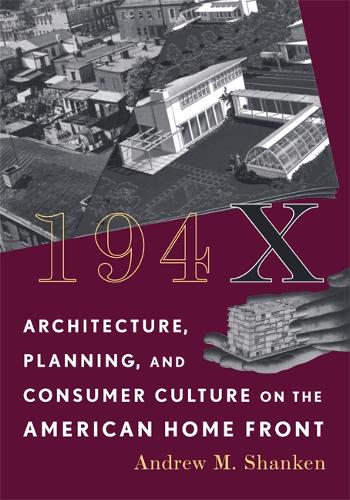
194X: Architecture, Planning, and Consumer Culture on the American Home Front
(Paperback)
Publishing Details
194X: Architecture, Planning, and Consumer Culture on the American Home Front
By (Author) Andrew M. Shanken
University of Minnesota Press
University of Minnesota Press
4th March 2009
United States
Classifications
Tertiary Education
Non Fiction
720.97309045
Physical Properties
Paperback
288
Width 178mm, Height 254mm, Spine 15mm
Description
During the Second World War, American architecture was in a state of crisis. The rationing of building materials and restrictions on nonmilitary construction continued the privations that the profession had endured during the Great Depression. In a major study of American architecture during World War II, Andrew M. Shanken focuses on the culture of anticipation that arose in this period, as out-of-work architects turned their energies from the built to the unbuilt, redefining themselves as planners and creating original designs to excite the public about postwar architecture. Shanken recasts the wartime era as a crucible for the intermingling of modernist architecture and consumer culture.
Author Bio
Andrew M. Shanken is assistant professor of architectural history at the University of California, Berkeley. His work has appeared in numerous publications, including Art Bulletin, Design Issues, Landscape, Places and Planning Perspectives.
